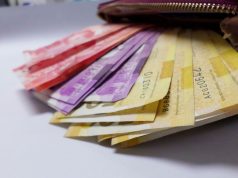PHL still most gender-equal country in Asia — report
By Anna Gabriela A. Mogato
THE PHILIPPINES still reigned as the most gender-equal country in Asia despite dropping three ranks lower in the World Economic Forum’s (WEF) Global Gender Gap Report 2017.
In the report released on Wednesday, the Philippines ranked tenth out of 144 countries in the global gender gap index with a score of 0.79 — the only Asian country to make it to the list. Iceland maintained first place with a score of 0.878.
The Philippines’ rank is the lowest since WEF started conducting the study in 2006. From that year until 2017, the country has been in the top ten, although now placing last for this year. The Philippines ranked fifth — the highest attained rank — back in 2013.
WEF’s annual Global Gender Gap Report measures the ranking of 144 countries in terms of economic participation and opportunity, education, political empowerment, and health and survival.
This year, the Philippines remained in first place in terms of educational attainment and went up four points to rank 13th place in political empowerment.
The country is notable in the region for having been led twice by a female president. It ranked fifth in terms of years with female head of state.
The Philippines was reported to have closed its gender gap for professional and technical workers. However, the country went four notches down to 25th place in economic participation and opportunity due to the decline in estimated earned income, according to the WEF report.
The Philippines experienced the sharpest drop in terms of health and survival — falling in 36th from last year’s first place. The country ranked 110th in sex ratio at birth and first in healthy life expectancy.
According to WEF, it would likely take East Asia and the Pacific 122 years to close the economic gender gap — with this region currently ranking fifth out of eight regions, topped by Western Europe.
Globally, WEF estimated that it would take 100 years for the global gender gap to fully close, longer than last year’s estimate of 83.
WEF also estimated that, economically, it would take about 217 years for the global gender gap to close.
Overall, WEF reported that the global gender gap stagnated across health, education, politics and the workplace.
A total of 68% of the global gender gap closed this year, lower than last year’s 68.3% due to declining scores in the workplace and political representation.



